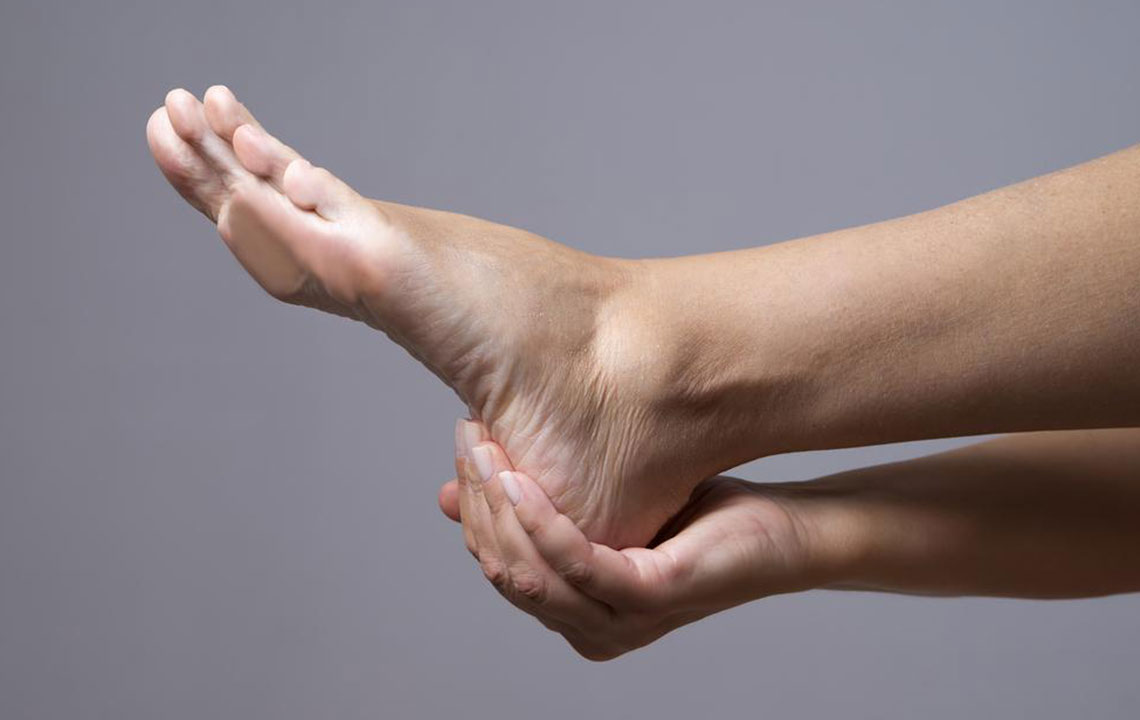8 Causes of Foot Pain You Must be Aware of

Your feet manage your entire body weight, and at times, they too can get strained. The causes of foot pain can vary, sometimes it could be a result of stress, injuries, wrong footwear, or health disorders. Foot pain specifies any form of discomfort that occurs in the toes, arches, soles, and toes. Depending on the cause, the pain can be mild or severe. Many of these can be easily managed at home, but seeking the counsel of a podiatrist is always a great way to steer clear of any doubts. Medical intervention can also help you to evade any possible risks such as infections or permanent joint damage.
Here are some of the common causes of foot pain:
Sprains and strains
A very common kind of foot injury, sprains and strains mostly affect the muscles and the ligaments. A sprain refers to a condition where one or more ligaments have twisted or bent. Moreover, a strain implies that muscle fibers are ripped or stretched. Usually, they occur when you suddenly move, fall, or collide with something. Apart from pain, these may result in inflammation and contusions. These can be administered at home with simple remedies such as cold compression, OTC medications, and rest.
Plantar fasciitis
Caused due to damage to the fascia, a ligament situated in the bottom of the feet, plantar fasciitis is extremely common in athletes and individuals aged above 40. It can also affect people who are constantly on their feet for long hours throughout the day. The discomfort is usually at its peak when you wake up in the morning. Along with home treatments, plantar fasciitis can be fixed with physical therapy, prescription drugs, and orthopedic footwear.
Bunions
These are a type of bone abnormality that occurs in the big toe, which makes it lean inward towards the other foot. Interestingly, bunions are more prevalent in women. In the early stages, you might not observe any painful symptoms, but as the deformity advances, it causes discomfort, calluses, tenderness, and difficulty in toe movements. Bunions can be managed by using over-the-counter (OTC) painkillers, comfortable arched insoles, and prescribed medicines. In certain cases, corrective surgeries might be required.
Gout
A kind of arthritis, gout usually ends up affecting your foot joint due to the excessive accumulation of uric acid in the bloodstream. It can cause incidents of acute pain, redness, and inflammation in the joints. The elimination of uric acid from the body is crucial for alleviating the symptoms of gout. Therefore, along with medications, special importance is given to the anti-gout diet plan.
Ingrown toenails
A condition where the edges of the toenails grow into the skin situated near the nail is known as ingrown toenails. This mostly affects the big toe of the foot. These can occur due to intense athletic activities, genetics, poor hygiene, toenail injuries, improper grooming of nails, inappropriate footwear, unusually shaped toenails, etc. Tenderness, pain, pus accumulation, oozing, bleeding, skin overgrowth, etc. are some of its symptoms. This condition can be treated using home solutions and medical/surgical treatments.
Flat feet
Also known as fallen arches, flat feet, like the name suggests, is when there is an absence of the curve on the bottom of your feet. It is common with babies and toddlers. However, they disappear by the child turns two or three. Elderly individuals and athletes have an increased risk of developing flat feet because they are prone to frequent injuries. Similarly, patients with diseases such as cerebral palsy are also vulnerable to this type of foot pain. Usually having flat feet is no cause for concern, but if it induces pain while walking, then you should see a podiatrist. It can be treated using special footwear, prescription drugs, changes in diet, exercise, and in rare cases, foot surgery.
Corns and calluses
To protect the bottom of the feet from strain and abrasion, at times, the body creates hardened layers of skin known as corn and calluses. For some individuals, these can cause immense discomfort while walking or running. Corns are smaller as compared to calluses, and normally don’t cause pain. These can be treated by scraping away the excess dead skin or by applying salicylic patches. In extreme cases, your doctor might suggest using custom made insoles or surgery.
Achilles tendon injuries
If you are experiencing pain and stiffness in the back of your heel, then it possible that your Achilles tendon is affected. Under normal circumstances, this discomfort can be alleviated using OTC painkillers, cold compression, and relaxation. Although, it might take several weeks to recover completely. If you have ruptured the tendon, then apart from the severe pain you might notice a pop or a snap in the feet and an inability to walk or stand. This might require a cast on the foot or corrective surgery.
Verrucas
These can be mistaken for corns, but they usually only develop on the soles. Verrucas are white surfaces filled with black dots in them. Unlike corns, they are flat and will clear up on their own. You can easily find over-the-counter (OTC) topical gels and plasters to get rid of them quickly.
Usually, causes of foot pain can be easily identified, but you should get an accurate medical diagnosis for an efficient and faster healing process.


